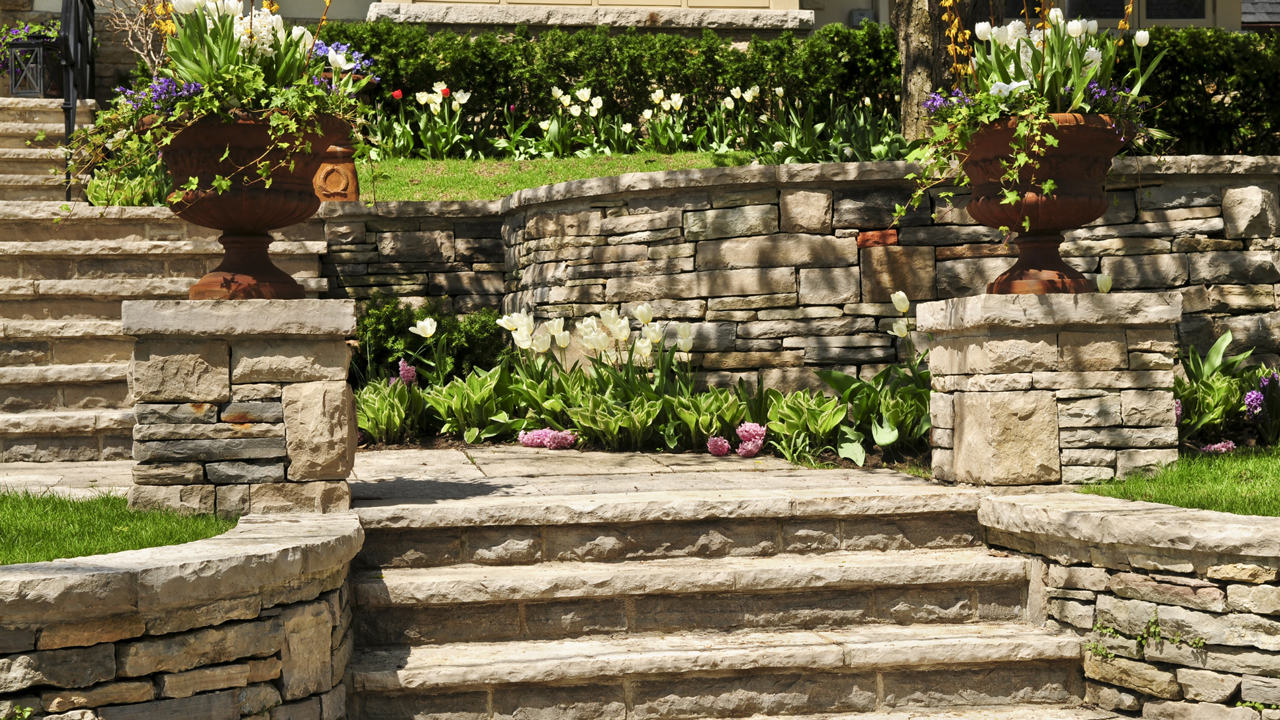Retaining wallsRetaining walls are structures designed to hold back soil and prevent erosion in landscapes with var..., an essential component of landscape design, serve both functional and aesthetic purposes. Among the variety of materials available, woodWood is a natural, organic material derived from trees, commonly used in landscaping and constructio... stands out as a popular choice, offering a blend of natural beauty and versatility.
However, not all wood is created equal when it comes to building a retaining wall. Understanding the factors that influence the choice of wood and proper construction techniques is crucial for a durable and visually appealing outcome.
The Importance of Choosing the Right Wood
Wooden retaining walls provide a warm, natural aesthetic that complements various landscape designs. However, exposure to the elements, soil pressure, and moisture can take a toll on the wood over time. Choosing the right type of wood is paramount to ensure longevity, structural integrity, and resistance to decay.
Pressure-Treated Wood: A Wise Choice
For retaining walls, especially those in ground contact, pressure-treated wood is a common and practical choice.
Pressure-treated wood undergoes a process where preservatives are forced into the wood fibers, creating a barrier against decay, insects, and fungi. This treatment significantly enhances the wood's ability to withstand the challenges posed by outdoor exposure.
Considerations for Wood Selection
- Wood Types - Different wood species have varying levels of natural resistance to decay. Common choices for retaining walls include cedar, redwood, and pressure-treated pine. Cedar and redwood naturally contain oils that resist decay and insects, making them popular choices for outdoor applications.
- Pressure-Treated Pine - Pressure-treated pine is a cost-effective option that provides durability and resistance to decay. It is crucial to select a grade of pressure-treated wood suitable for ground contact to ensure its longevity in retaining wall construction.
- Wood Preservatives - The preservatives used in pressure-treated wood can influence its performance. ACQ (Alkaline Copper Quaternary) and CA-B (Copper Azole Type B) are common preservatives that provide protection against decay and insects. Understanding these preservatives helps in making an informed decision based on environmental considerations and desired longevity.
- Wood Dimensions - The size and dimensions of the wood members used in the retaining wall constructionRetaining wall construction involves building walls that hold back soil and create level areas in la... play a significant role in its stability. Larger walls or walls with greater soil pressure may require heavier and thicker wood sections to ensure adequate strength.
- Proper Drainage - Regardless of the wood type chosen, proper drainage behind the retaining wall is crucial for preventing water buildup that can lead to soil erosion and increased pressure on the wall. Installing drainage materials, such as gravelGravel consists of small, loose, rounded or angular stones, typically ranging in size from a few mil... or drainage pipes, can help in managing water effectively.
- Attention to Water Levels - Regular monitoring of water levels in the soil and behind the wall is essential. Excessive water can exert pressure on the wall, leading to instability. Proper gradingGrading is the process of reshaping the land surface to achieve a specific slope or contour, often f... and drainage planning, along with periodic checks, contribute to the longevity of the retaining wall.
Construction Techniques for Wooden Retaining Walls
- Timber Wall Construction - Timber retaining walls are a popular choice for smaller walls. The use of pressure-treated wood timbers allows for the creation of sturdy and visually appealing structures.
- Variety of Shapes and Heights - Wood's versatility allows for the construction of retaining walls in a variety of shapes and heights. Whether it's a straight vertical wall or a tiered design, wood can adapt to different landscape and design preferences.
- Proper Installation - Proper installation is crucial for the stability and longevity of a wooden retaining wall. This includes securing the timbers together with suitable fasteners, ensuring proper anchoring, and providing adequate drainage.
- Outdoor Wood Treatment - While pressure-treated wood offers enhanced resistance, applying additional outdoor wood treatment or sealant can further protect the wood from UV rays and the effects of weathering.
Maintain Your Wooden Retaining Wall
Ensuring the longevity and appeal of your wooden retaining wall involves ongoing maintenance. Here are seven essential tips to preserve the beauty and functionality of your structure:
- Regular Inspections - Conduct periodic inspections to identify any signs of decay, insect infestation, or structural issues. Early detection allows for timely intervention and prevents more significant problems.
- Cleaning - Remove dirt, debris, and plant growth from the surface of the wood. This not only enhances the visual appeal but also prevents moisture retention, which can contribute to decay.
- Sealing and Staining - Applying a quality wood sealant or stain protects the wood from UV rays, moisture, and temperature fluctuations. This additional layer of protection enhances the wood's natural resistance and prolongs its lifespan.
- Repairing Damage Promptly - If any damage is detected during inspections, address it promptly. This may involve replacing damaged wood sections, reinforcing connections, or addressing drainage issues.
- Proper Drainage Maintenance - Ensure that drainage features, such as weep holes and drainage materials, remain clear and functional. Proper drainage is crucial for preventing water buildup and soil erosion behind the wall.
- Addressing Soil Erosion - If you notice signs of soil erosion, take corrective measures. This may involve regrading the soil, installing erosion-control fabrics, or adding vegetation to stabilize the soil.
- Professional Inspection - Consider periodic professional inspections, especially for larger retaining walls. Experts can assess the structural integrity of the wall and provide recommendations for maintenance and repairs.
Environmental Considerations
Wooden retaining walls, while offering natural beauty, are subject to environmental factors. Understanding these considerations will help you make informed decisions:
- Climate - The local climate can influence the performance of a wooden retaining wall. Extreme temperature variations, high humidity, or prolonged exposure to rain can impact the wood over time.
- Soil Conditions - The type of soil and its drainage characteristics play a role in the longevity of a retaining wall. Clayey soils, for example, can retain moisture, increasing the pressure on the wall.
- Vegetation - The proximity of plants and trees to the retaining wall should be considered. Plant roots can exert pressure on the wall, and overhanging branches may contribute to moisture-related issues.
Choose the Perfect Wood for Your Retaining Wall with West Hills Masonry!
Enhance your outdoor space with the timeless appeal of a wooden retaining wall. West Hills Masonry brings expertise to every project, ensuring your wood choice complements your landscape.
From pressure-treated options for durability to proper drainage considerations, our team crafts retaining walls that balance aesthetics and functionality. Ready to transform your space? Contact us today at 714-519-5009 and embark on a journey of enduring beauty and structural integrity with our wooden retaining walls.

 Carlos Gonzales
Carlos Gonzales